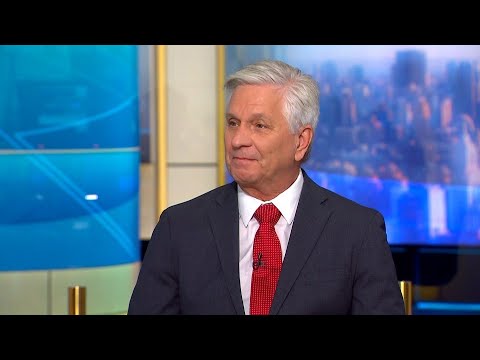Fed Governor Christopher Waller emphasizes a cautious, data-driven approach to monetary policy, advocating gradual rate cuts amid a puzzling divergence between weak labor market growth and strong economic indicators, while highlighting concerns about tariff uncertainty and sector-specific investment trends like AI. He stresses the importance of forward-looking economic analysis, warning that labor market weakness may signal structural shifts, and underscores the Fed’s focus on maximum employment and price stability rather than financial market movements.
In the interview, Fed Governor Christopher Waller discusses the ongoing interview process with Treasury Secretary Bessant, highlighting the importance of forward-looking economic analysis. Waller emphasizes the need to interpret data not just as historical information but as indicators of future trends, citing his earlier prediction of a soft landing in the labor market as an example of this approach. He appreciates conversations that delve into economics, Fed policy, and financial markets, underscoring the value of visionary thinking akin to that of former Fed Chair Alan Greenspan.
Waller addresses the current economic landscape, noting a puzzling divergence between weak labor market growth and relatively strong economic indicators. He explains that either GDP growth must slow down or the labor market must improve, as both conditions cannot coexist indefinitely. His approach to monetary policy is cautious and data-dependent, advocating for gradual 25 basis point rate cuts to provide support while waiting for clearer economic signals. He also discusses the impact of tariff uncertainty on hiring decisions, suggesting that firms have been hesitant to expand their workforce due to the costs associated with tariffs.
The governor highlights the contrasting financial conditions experienced by corporate America versus Main Street America. While financial markets show signs of strength, many American households face tighter credit conditions, with higher mortgage rates and expensive auto loans. Waller expresses hope that ongoing rate cuts will eventually ease borrowing costs for consumers, particularly through lower Treasury yields that influence mortgage rates. He also points out the sector-specific nature of current investment trends, especially in AI-related areas, which complicates the overall economic picture.
Responding to concerns that the Fed might be misled by weak payroll data into cutting rates prematurely, Waller reiterates that his mandate focuses on maximum employment and price stability, not financial markets. He argues that if loose financial conditions were fueling a broad economic boom, it would be reflected in stronger labor market data, which is not currently the case. On inflation, he downplays the impact of AI and tariff-related price increases, viewing them as sectoral reallocations that are offset by softness elsewhere in the economy, and expects inflation to remain manageable.
Finally, Waller contrasts the current economic situation with last year’s environment, noting the added complexities of tariff uncertainty and AI developments. He expresses concern that the labor market weakness may represent a structural shift rather than a cyclical downturn, which monetary policy is better equipped to address. As a risk manager, he advocates for a cautious approach, assuming the weakness might be cyclical to avoid prematurely tightening or loosening policy. This measured stance aims to balance support for the economy while remaining vigilant about potential long-term changes in labor demand.
